Predictions & Data for this entry
| Model: abj | climate: Cfb, Dfb, Dfc | migrate: | phylum: |
| COMPLETE = 5.0 | ecozone: TH | food: biD, biF | class: |
| MRE = 0.170 | habitat: 0iTf | gender: D | order: |
| SMSE = 0.057 | embryo: Ts | reprod: Ap | family: |
Zero-variate data
| Data | Observed | Predicted | (RE) | Unit | Description | Reference |
|---|---|---|---|---|---|---|
| am | 75 | 74.94 | (0.0007679) | d | life span | CromDood1997 |
| Lb | 0.03077 | 0.03627 | (0.1788) | cm | total length at birth | Hamd2014 |
| Li | 0.238 | 0.2354 | (0.01104) | cm | ultimate total length | Hamd2014 |
| Wwb | 1.695 | 1.84 | (0.08578) | mug | wet weight at birth | CromDood1997 |
| Wwp | 30.52 | 28.9 | (0.05307) | mug | wet weight at puberty | CromDood1997 |
| Wdi | 87 | 85.49 | (0.01736) | mug | ultimate dry weight | Hamd2014 |
| Wwf1 | 305 | 519.9 | (0.7046) | mug | wet weight at birth | Hamd2014 |
| Wdf1 | 87 | 88.38 | (0.01591) | mug | dry weight at birth | Hamd2014 |
| Wwf2 | 226 | 317 | (0.4026) | mug | wet weight at birth | Hamd2014 |
| Wdf2 | 76 | 53.89 | (0.2909) | mug | dry weight at birth | Hamd2014 |
| Wwf3 | 169 | 179.8 | (0.0641) | mug | wet weight at birth | Hamd2014 |
| Wdf3 | 52 | 30.57 | (0.4121) | mug | dry weight at birth | Hamd2014 |
| Ri | 19.5 | 17.29 | (0.1135) | #/d | maximum reprod rate | Hamd2014 |
Uni- and bivariate data
| Data | Figure | Independent variable | Dependent variable | (RE) | Reference |
|---|---|---|---|---|---|
| tL_f1 | 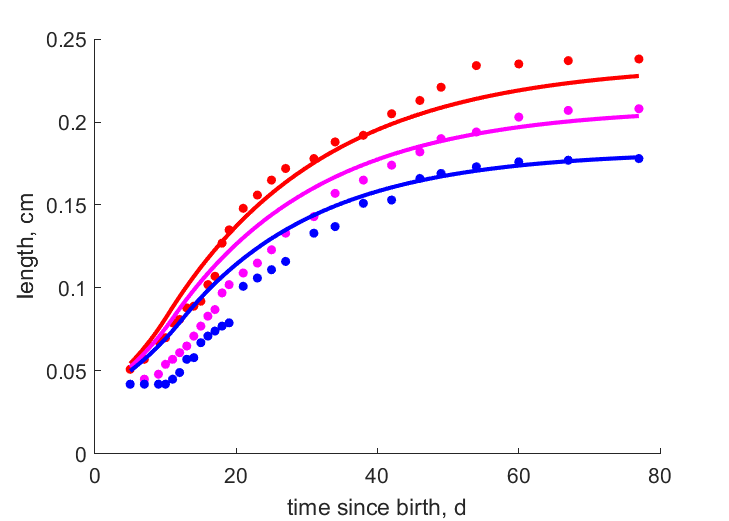 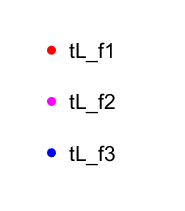 | time since birth | length | (0.06695) | Hamd2014 |
| tL_f2 |   | time since birth | length | (0.1395) | Hamd2014 |
| tL_f3 |   | time since birth | length | (0.1624) | Hamd2014 |
| tN_f1 | 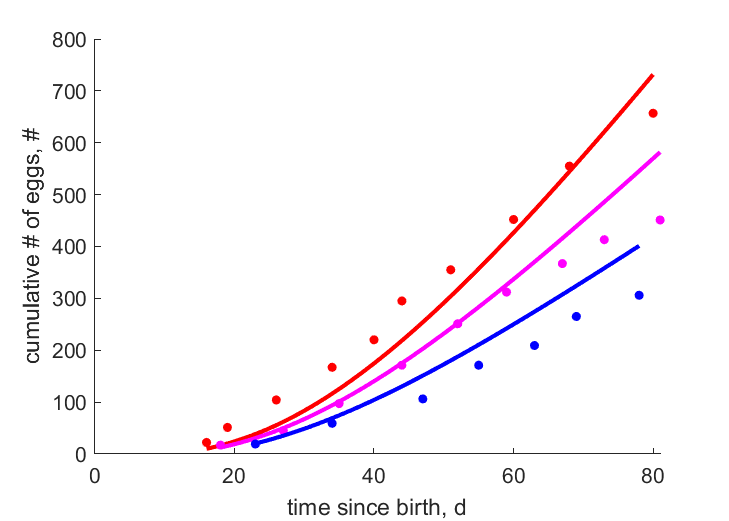 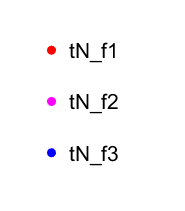 | time since birth | cumulative # of eggs | (0.1482) | Hamd2014 |
| tN_f2 |   | time since birth | cumulative # of eggs | (0.1341) | Hamd2014 |
| tN_f3 |   | time since birth | cumulative # of eggs | (0.2773) | Hamd2014 |
| tL_T3 |  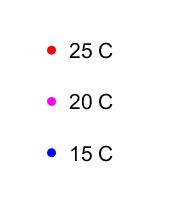 | time since birth | length | (0.0661) | Hamd2014 |
| tL_T2 |   | time since birth | length | (0.03317) | Hamd2014 |
| tL_T1 |   | time since birth | length | (0.08042) | Hamd2014 |
| tN_T3 |   | time since birth | cumulative # of eggs | (36.16) | Hamd2014 |
| tN_T2 |   | time since birth | cumulative # of eggs | (0.08898) | Hamd2014 |
| tN_T1 |   | time since birth | cumulative # of eggs | (0.3147) | Hamd2014 |
| Tab | 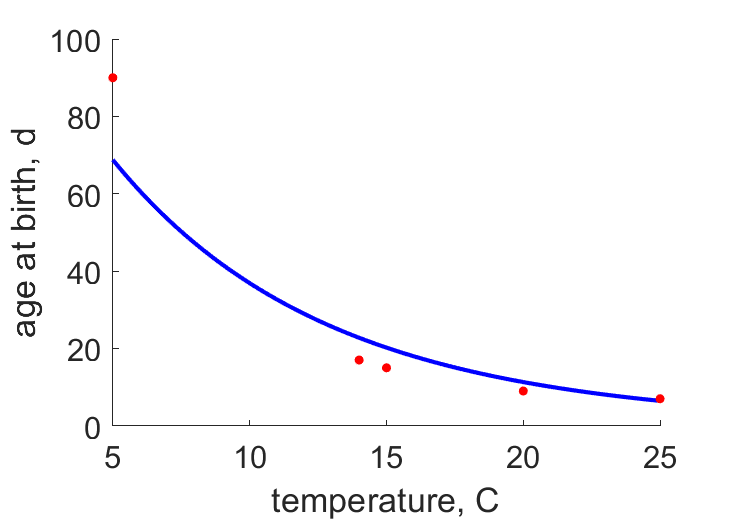 | temperature | age at birth | (0.2541) | Hamd2014 |
| WJO |  | wet weight | O_2 consumption | (0.3149) | StamLeem1996 |
| tN | 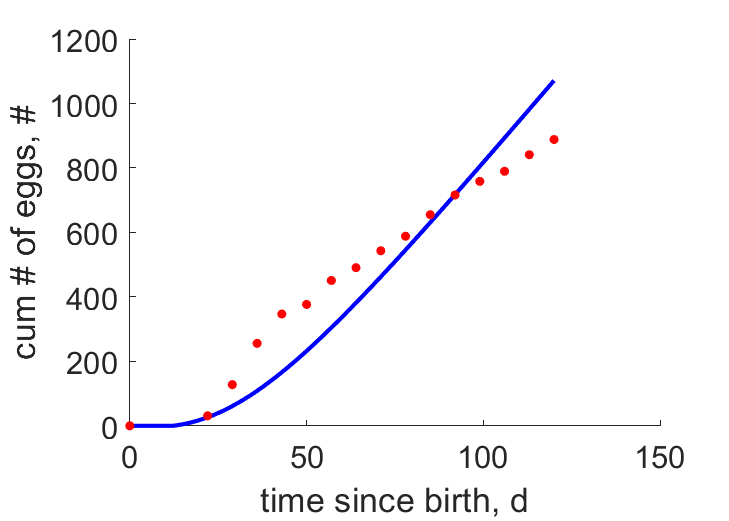 | time since birth | cum # of eggs | (0.1809) | CromDood1997 |
| tW | 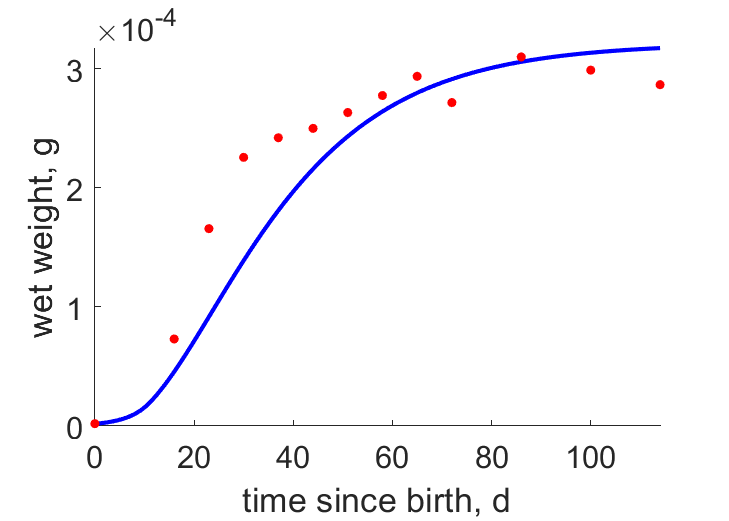 | time since birth | wet weight | (0.1417) | CromDood1997 |
Pseudo-data at Tref = 20°C
| Data | Generalised animal | Folsomia candida | Unit | Description |
|---|---|---|---|---|
| v | 0.02 | 0.003483 | cm/d | energy conductance |
| p_M | 18 | 1870 | J/d.cm^3 | vol-spec som maint |
| k_J | 0.002 | 0.002 | 1/d | maturity maint rate coefficient |
| k | 0.3 | 0.004741 | - | maintenance ratio |
| kap | 0.8 | 0.3745 | - | allocation fraction to soma |
| kap_G | 0.8 | 0.8024 | - | growth efficiency |
| kap_R | 0.95 | 0.95 | - | reproduction efficiency |
Discussion
- A laboratory culture of F. candida was used for these experiments, which has been kept for more than 10 years at the Institute of Environmental Sciences of Jagiellonian University, Poland. The animals were maintained as stock cultures in plastic boxes filled with moist plaster of paris, mixed with charcoal, at a constant temperature of 20C, and with dried baker's yeast (Dr. Oetker) as food. Prior to the experiments, adult animals were transferred to a plastic boxes (10 cm in diameter) with plastic screw top lids, and filled with moist plaster of paris to lay eggs. After 7 days, the adults were removed and the eggs were allowed to hatch. Emerging juveniles of age between 1 and 3 days were used in the experiments. Two sets of experiments were designed. EXPERIMENT 1: growth and reproduction of individuals was observed at three feeding conditions. EXPERIMENT 2: growth and reproduction of individuals observed at three different temperatures with ad libitum food. Both experiments were carried out in plastic containers (3. 5 cm in diameter) with plastic screw top lids. 1--3 days old juveniles were individually kept in plastic vessels (diameter 3.5 cm) filled with moist plaster of paris at three feeding regimes. Baker's yeast solution (0.2 g/ml) was used as food source. Body lengths (i.e. the distance from the posterior end of the abdomen to the anterior end of the head between the antennae) were determined using the free image analysis software ImageJ (v.1.47p); (National Institute of Health, USA, http://imagej.nih.gov).EXPERIMENT 1: Growth and Reproduction at three food regimes. In the highest food regime, food was supplied ad libitum. In the medium food regime, the yeast solution was available for 24 hours, followed by 48 hours without food. In the lowest food regime, the yeast solution was available for 24 hours, followed by 96 hours without food. EXPERIMENT 2: three constant temperature % chambers set at 15, 20 and 25 oC were used. The humidity of the plaster of paris was kept constant by regularly spraying with distilled water. 10 individuals per feeding and temperature regime were used. Body length and reproduction of the individuals were observed for 11 - 12 weeks. The three temperature conditions are T1 = 288 K, T2 = 293 K and T3 = 298K.
- Egg production at treatment T3 did not follow the expected pattern for unknown reasons
- Respiration is overestimated; this might suggest product formation coupled to maintenance
Bibliography